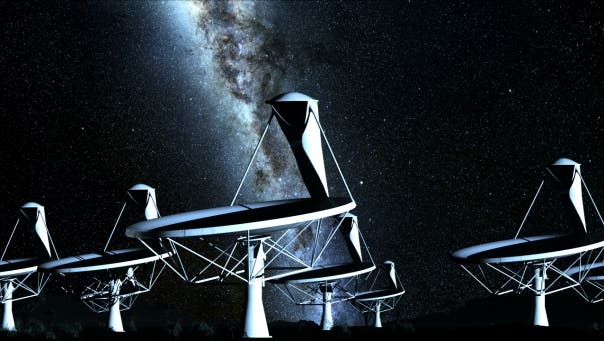
As far as science goes, most of the time size really does matter. Think of a tiny amateur telescope how insignificant it seems, but yet how revealing it can be for the observer – multiply this by a million times the effect and size and you’ve got yourself the Square Kilometer Array (SKA), one of the most ambitious international joint projects of the new decade – a massive $2.1 billion telescope which hopeful will unravel such cosmic mysteries as dark energy or the formation of the Universe.
Basically, the SKA is a huge array of telescopes, which come together into one massively powerful telescope, as signals from individual radios that make up the massive array of antennas converge. The SKA is planned to cover one square kilometer of South African or Australian soil, hence the name, while a decision on its final location will be made in 2012.
“The power of this new telescope project is going to surpass anything we’ve seen before, enabling us to see many more radio-emitting stars and galaxies and pulling the curtains wide open on parts of the great beyond that radio astronomers like me have only ever dreamt of exploring,” said Professor Dame Jocelyn Bell Burnell, prominent radio astronomer and president of the Institute of Physics, in a statement on the new plans.
The Square Kilometer Array heralds in a post-Einstein era of physics that will help us take huge strides in our attempt to understand the most bizarre objects and the darkest ages of the Universe,” she said.
Given the current economic distress felt all over the world, it’s quite amazing such an amazing world wide scientific initiative is steadily heading towards solidification, as Australia, China, the Netherlands, New Zealand, South Africa, France, Germany Italy, and the U.K. are all partnering financially, technologically and scientifically to make SKA a successful project.
Besides the obvious astronomical and astrophysical benefits, expect the development of the SKA project to drive technology development in antennas, signal transport, signal processing, and software and computing, those involved said. Construction for the project could begin by 2016, with the telescope expected to be complete by 2024.
Was this helpful?



